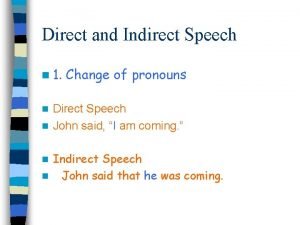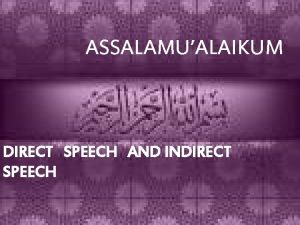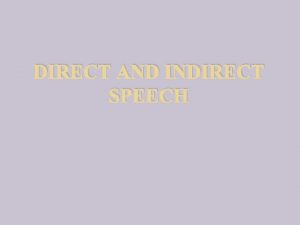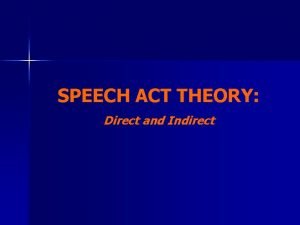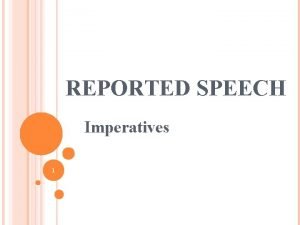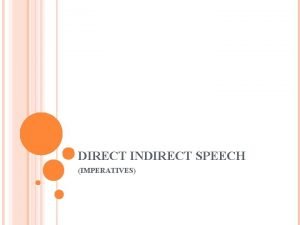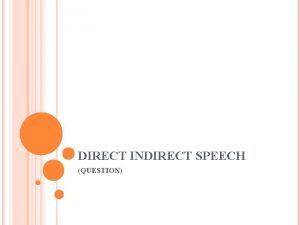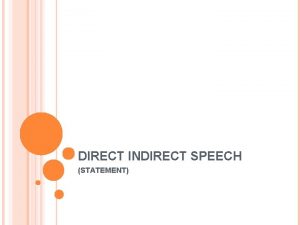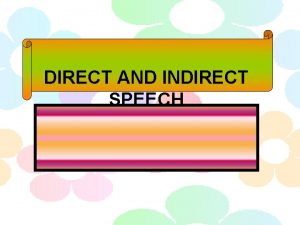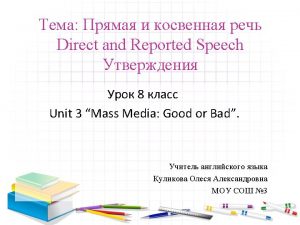DIRECT AND INDIRECT SPEECH Defintion Direct Speech Refers








- Slides: 8

DIRECT AND INDIRECT SPEECH

Defintion � Direct Speech Refers to reproducing another person’s exact words. Quotation marks are used. � Indirect Speech Refers to reproducing the idea of another person’s words. Not all of the exact words are used: verb forms and pronouns may change. Quotation marks are not used.

The changes that need to be from Direct to Indirect Speech 1. To be & Auxiliary Verbs Direct Indirect Am/is/are was/were Shall/will should/would Can could May might Must Have/has to had to Ought to

2. Time & Place (keterangan waktu & tempat) Direct Indirect Now then Tomorrow the following day next week the following week tonight that night today that day yesterday the day before last night the night before last week the week before, the precious week here this that these those

3. Tenses Direct Simple present Present continous Present perfect Present Perfect Continuous - Simple Past Continuous - Simple future - Indirect simple past continous past perfect Past Perfect Continuous Past Pefect Past Perfect Continuous past future

Patterns Direct and Indirect Speech Direct Indirect Simple Present Tenses » Simple Past Tenses + : S + V 1(s, es) + o/c S + V 2 + o/c - S + Did + Not + V 1 + o/c : S + Do/Does + V 1 + o/c ? : Do/Does + S + V 1 + o/c Did + S + V 1 + o/c

Types and Examples I. STATEMENT - Father said “I am going out of town tomorrow” - Father said that he was going out of town the following day. II. COMMAND 1. Positive Command to + infinitive - Mary told me “Stop talking to Jane” - Mary told me to stop talking to Jane. 2. Negative Command not + to - Mothers asked John “Don’t smoke too much” - Mother asked John not to smoke too much.

III. QUESTION Positive Form - John asked Mary : “Why do you get angry with me ? ” - John asked Mary why she got angry with him. Yes & No Question form used if, whethe - Mary asked me : “Did you she John at the party the night before. - Mary asked me whether I had seen John at the party the night before. IV. REPORTED SPEECH / MIXED TYPE used as - She asked me : ”What is the time ? ”, my watch has stopped. - She asked me what the time was as her watch had stopped.

